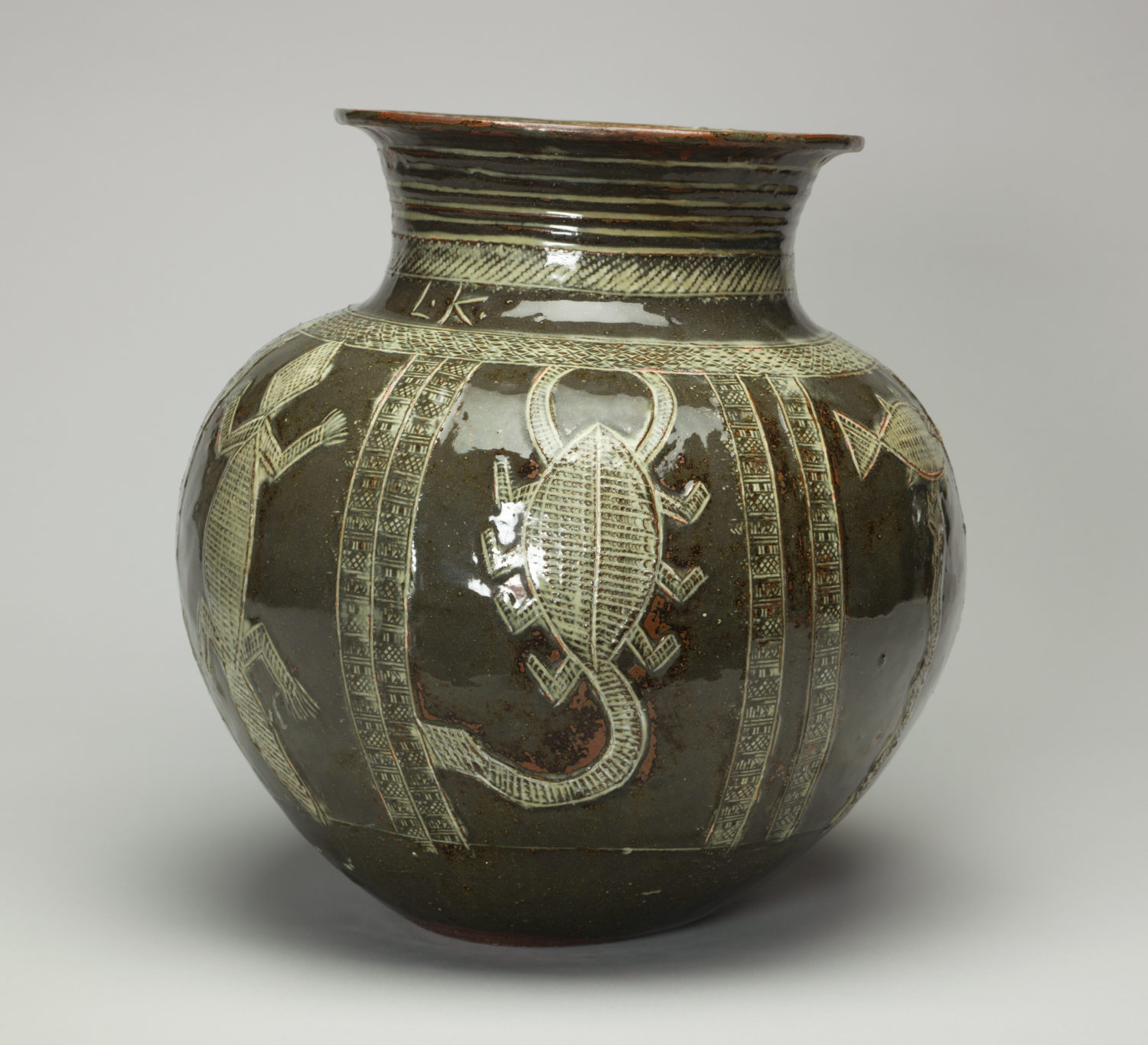Look and Think activities should take 5 -10 minutes.
Do activities might take longer depending on the task and how creative you are feeling!
Jar, Ladi Kwali MBE (1925–1984), 1957
Hand-coiled stoneware with impressed and incised decoration, green and white slip and a transparent glaze
33cm high, 35cm wide, C.364-2016
Look
This jar is decorated with different animals. Can you name any of them?
Look at the patterns the artist has drawn into the clay.
Think
This water jar was made in Nigeria, a country on the West coast of Africa, by the artist Ladi Kwali.
She included animals that lived there. What do you think their habitats might be like?
Do
Find out more about Nigeria and the animals that live there.
The shape of this jar was inspired by the way people in Nigeria often stored water at home.
The animals on this jar might be found near a river. What other habitats can you think of?
Have a go at making your own animal habitat jar. Follow the video below.

© The estate of Ladi Kwali
Make your own habitat jar Make a list of all the different animal habitats that you can think of.
Which sort of habitats are there close to where you live? Which one is your favourite?
You will need
- A clean jar or jars
- Some materials to make animals, or parts of your habitat – card, old plastic, string
- Pens or paint
- Something sticky – glue, sellotape or blue tack.
- Natural materials such as soil, sand or leaves. Remember to ask a grown up if you can use these things!
Instructions:
- Make sure your jar is clean.
- Design and make the animals living in your habitat in card or plastic.
- Cover the bottom of your jar in material that looks like the ground of your habitat. You could use soil, sand, small stones, grass – or you could colour in a circle of card.
- Add in your other natural materials and your animals. You could hang any birds or fish from the lid.
- Add more to the outside of your jar if you want!
This water jar was made by potter Ladi Kwali, who was born and raised in the Gwari region of Nigeria. As a child, Kwali’s aunt taught her how to make pots in the local, traditional style. Kwali was highly skilled and her pots were very popular. They were collected by the local leader, the Emir of Abuja, where they were seen by British studio potter, Michael Cardew, when he visited Nigeria in 1950. Under the instruction of the colonial British government, Cardew set up a local Pottery Training Centre in Abuja (the Nigerian capital) and invited Kwali to join him. Her work was subsequently shown in exhibitions around the world and Kwali joined Cardew on demonstration and lecture tours to Europe and North America.
Ladi Kwali is celebrated as one of Nigeria’s most successful artists. She was given an honorary doctorate from Ahmadu Bello University, as well as the Nigerian National Merit Award (the highest award for academic achievement) and was made Officer of the Order of the Niger. The Abuja Pottery Training Centre was renamed the Ladi Kwali Pottery Centre in her honour. She also appears on Nigerian currency, on the 20 Naira note!
Michael Cardew taught Kwali to throw on a wheel but mostly she made pots using the local method learnt from her aunt, positioning a pot on a stool or low table and walking around it, coiling the clay and thinning it as she went. Although this piece is called a ‘water jar’, it was not made to be functional but was intended as an exhibition piece for European collectors. It is covered with animals, which Kwali incised and cross-hatched from imagination, without a sketch or plan.
Image rights: © The estate of Ladi Kwali
Download this Look Think Do as a PDF or Word document.